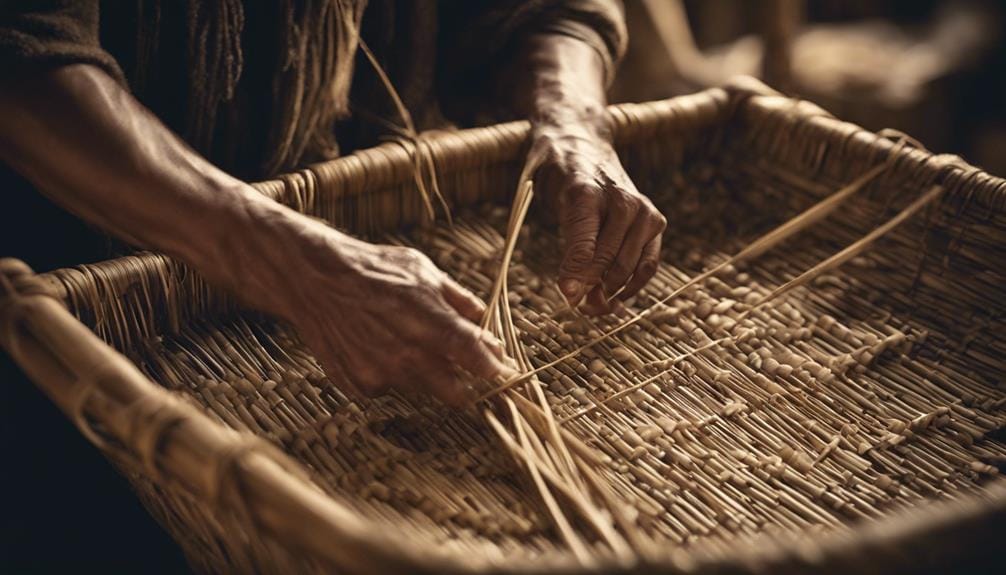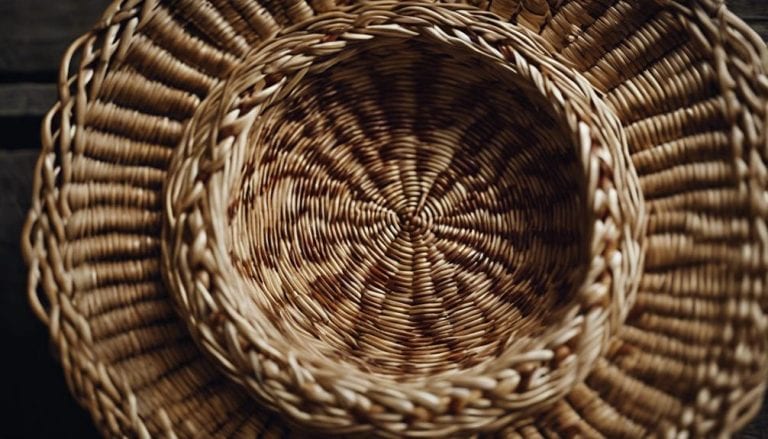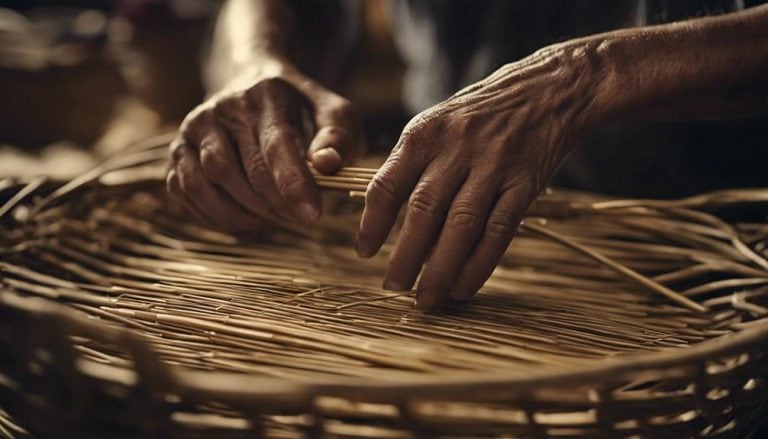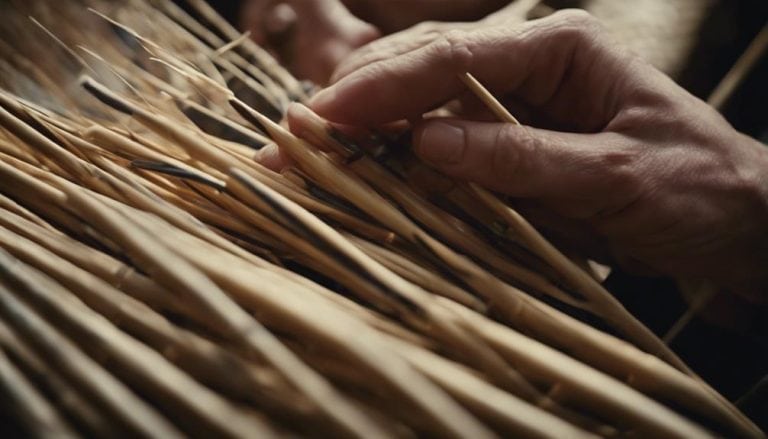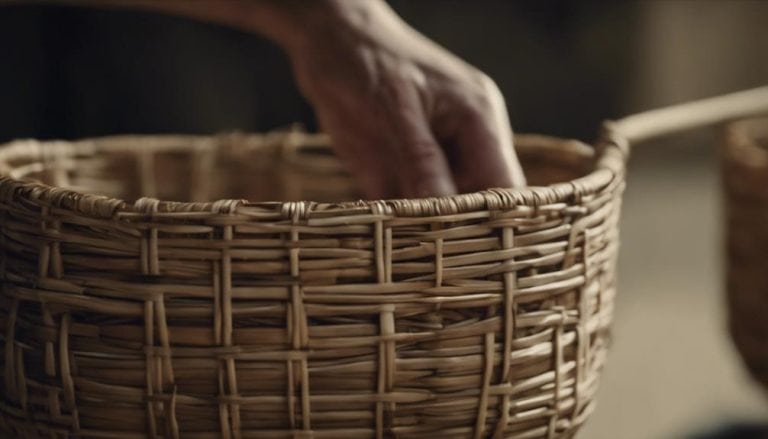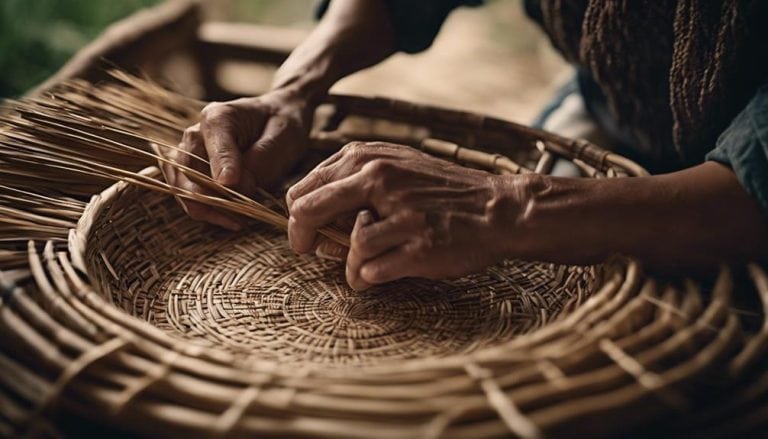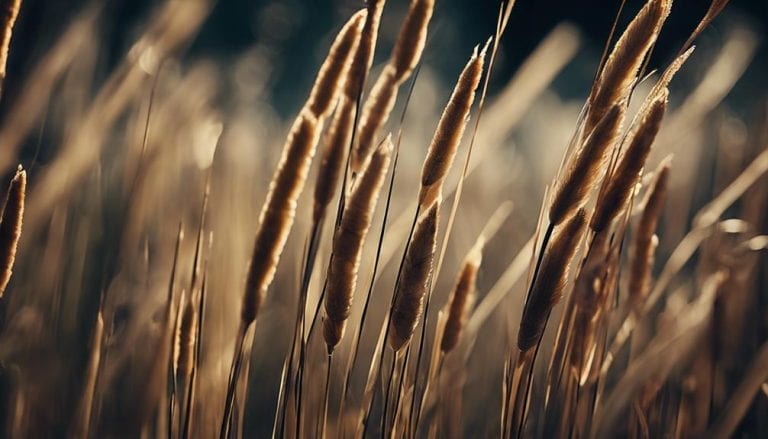Using Rush Reeds in Traditional Basketry
As I gently weave the supple rush reeds through my fingers, I am reminded of the quiet strength and natural beauty they hold. The intricate art of utilizing rush reeds in traditional basketry goes beyond mere crafting; it embodies a timeless connection to the earth and the hands that shape it.
With each stitch, a story unfolds, intertwining tradition and innovation in a dance of sustainability and creativity. Join me as we explore the rich tapestry of techniques and possibilities that await in the world of rush reed basket making.
Using rush reeds in traditional basketry involves weaving techniques that have been passed down through generations. This practice creates functional and beautiful pieces with natural materials, showcasing the artistry and sustainability of traditional crafts.
Key Takeaways
- Rush reeds enhance basket quality, durability, and artistic possibilities.
- Sustainable harvesting and preparation methods ensure traditional craft preservation.
- Master weaving techniques for tight, secure baskets and longevity.
- Rush reeds symbolize cultural heritage, community ties, and environmental sustainability.
Benefits of Using Rush Reeds
Using rush reeds in traditional basketry enhances the quality, durability, and versatility of the baskets crafted. The cultural significance of incorporating rush reeds is preserving age-old techniques and sustainable practices. These eco-friendly materials contribute to the craft’s longevity and reduce the environmental impact of basket making.
The artistic possibilities rush reeds offer are vast, allowing artisans to create intricate designs that showcase skill and creativity. The flexibility and ease of working with rush reeds enable weavers to experiment with various weaving patterns, resulting in unique and visually appealing baskets. Additionally, the natural waxy coating on rush reeds adds a layer of protection, making the baskets more durable and long-lasting.
Furthermore, rush reeds’ lightweight yet sturdy nature makes the baskets functional and portable for various purposes. The water-resistant properties of rush reeds also make them ideal for crafting baskets that can hold liquids or damp items without compromising the structure’s integrity.
Types of Rush Reeds Available
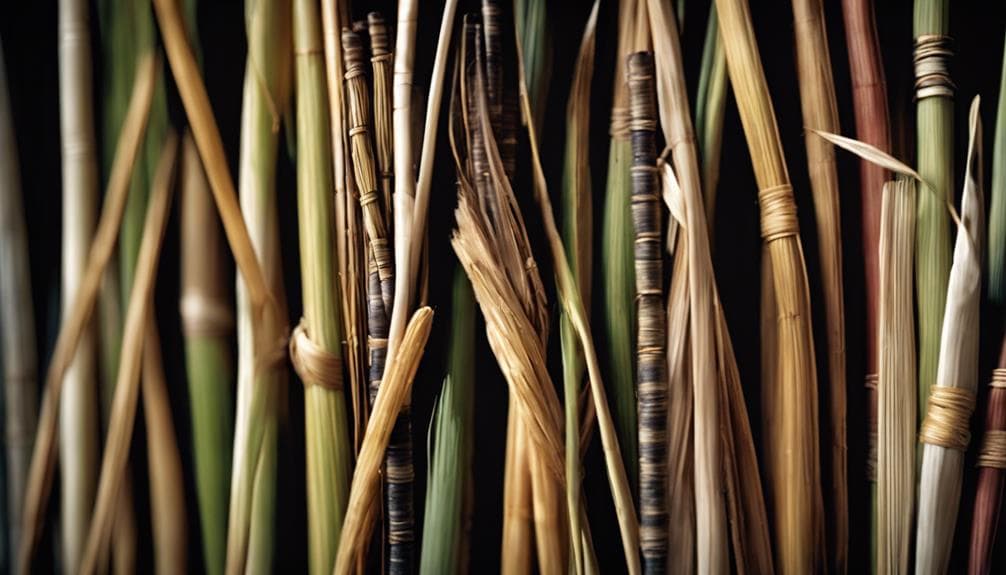
Soft rush, scientifically known as Juncus effusus, is a prevalent type of rush reed extensively utilized in traditional basket weaving. Various rush reed varieties offer a range of textures and color options, allowing for diverse and intricate basket designs. Sustainable harvesting practices ensure minimal environmental impact while acquiring these versatile materials for basket weaving projects.
| Rush Reed Variety | Color Options |
|---|---|
| Soft Rush | Green |
| Bulrush | Brown |
| Corkscrew Rush | Reddish-brown |
| Hardstem Bulrush | Yellow |
| Giant Bulrush | Dark green |
Harvesting rush reeds involves careful consideration to preserve wetland ecosystems and ensure a continuous supply for future generations. By selecting the appropriate rush reed variety, artisans can create stunning baskets that showcase their creativity and contribute to the preservation of traditional crafts and the environment.
Tools and Materials Needed
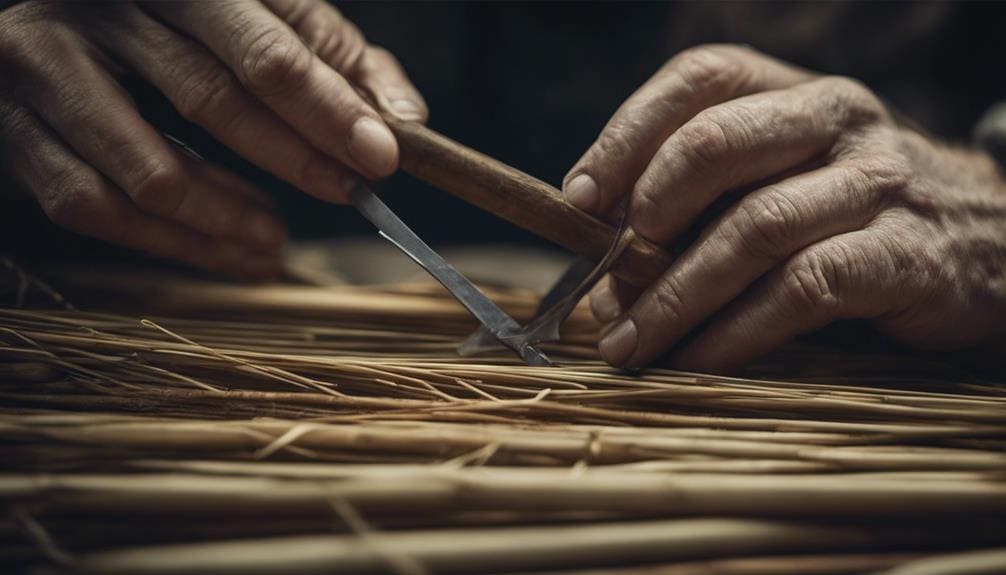
Harvesting rush reeds for traditional basket weaving requires specific tools and materials to ensure the quality and durability of the final basket product. To embark on this journey of creating beautiful rush reed baskets, the following are essential:
- Rush Cutter: This tool is crucial for cleanly harvesting rush reeds without damaging the plant, ensuring sustainability and future growth.
- Pruning Shears: Used for the precise cutting of rush reeds, these shears help maintain the integrity of the material for weaving.
- Mallet and Knife: These tools assist in the initial processing of rush reeds, allowing for the removal of unwanted parts and shaping the reeds for weaving.
In rush reed basketry, where artistic designs and creativity flourish, having the right tools and materials is fundamental to the craft. Artisans can elevate their creations by employing proper harvesting techniques and sustainable practices while honoring tradition and the environment.
Preparing Rush Reeds for Weaving
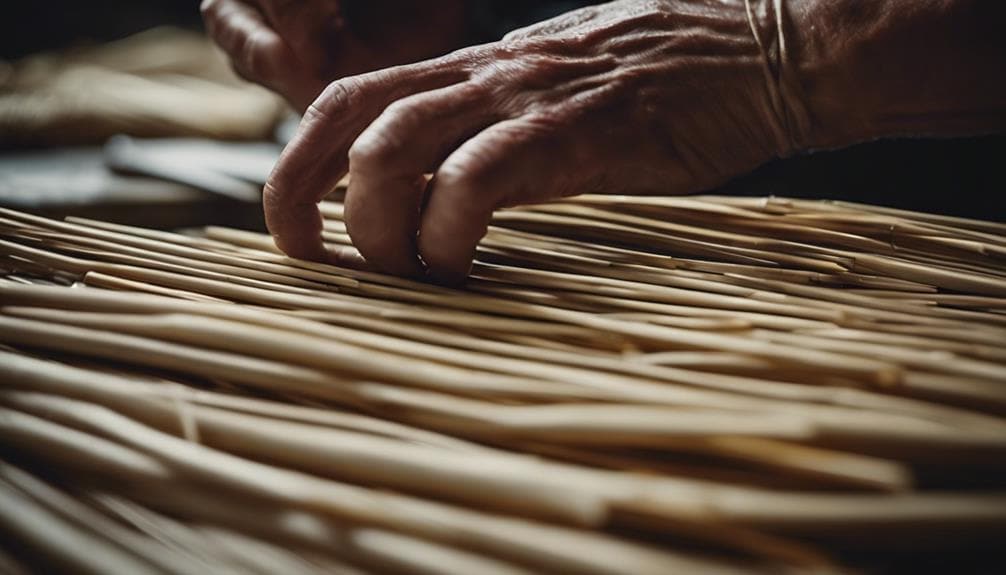
Thoroughly dried rush reeds, essential for weaving, require meticulous preparation to enhance their flexibility and durability. Rush reeds, harvested in the summer at their peak quality, must be sorted by size and length to ensure consistency in weaving. Soaking dried rush reeds in water before weaving is crucial, as it increases their pliability, making them easier to manipulate during the weaving process.
Trimming any frayed or damaged ends of rush reeds is vital before incorporating them into basketry projects to maintain the overall integrity of the final piece. By carefully attending to these steps, we honor the properties of rush reeds and set the foundation for successful weaving endeavors. This methodical approach, rooted in traditional harvesting techniques and mindful sorting practices, ensures that the rush reeds are prepared optimally for weaving, resulting in durable and beautifully crafted basketry creations.
Basic Weaving Techniques With Rush
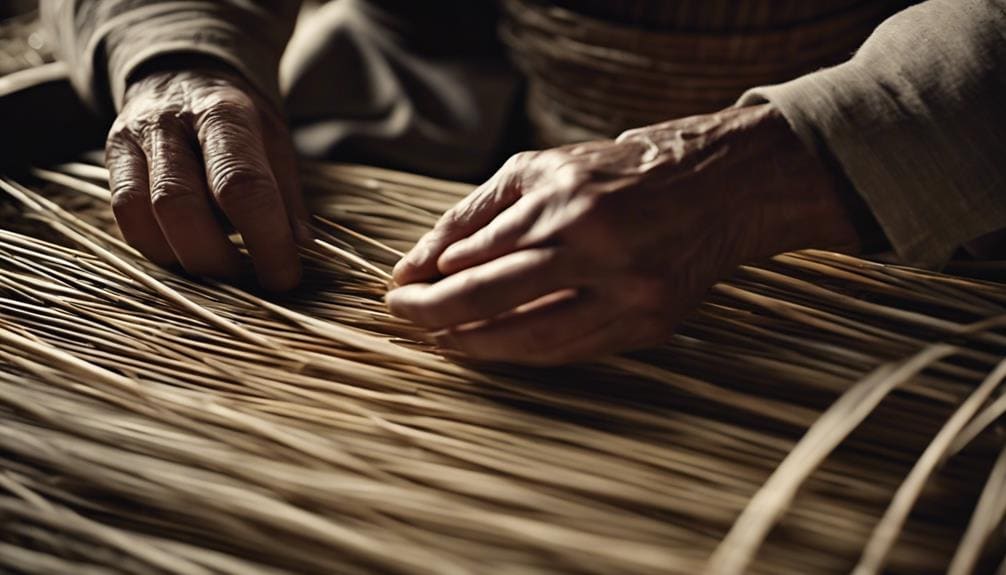
After preparing the rush reeds for weaving, the next step involves mastering basic weaving techniques with the rush to create structurally sound and aesthetically pleasing basketry. Understanding the intricacies of rush weaving is essential for crafting durable and beautiful baskets.
Here are some key points to keep in mind:
- Basketry Patterns: Incorporating different weaving patterns can add visual interest and complexity to your rush baskets. Experimenting with various designs can elevate your basketry skills and create unique pieces.
- Weaving Skills: Developing proficient weaving skills is crucial for creating tight and secure baskets. Techniques such as twining, plaiting, and coiling with rush will enhance your ability to craft intricate designs.
- Moistening Rush Reeds: Wetting the rush reeds before weaving is a common practice to increase their flexibility and prevent breakage. This step makes the reeds more pliable, allowing for smoother weaving and shaping of the basket.
Mastering these basic weaving techniques with rush will lay a solid foundation for your journey into more advanced and elaborate basket weaving projects.
Advanced Weaving Patterns to Try
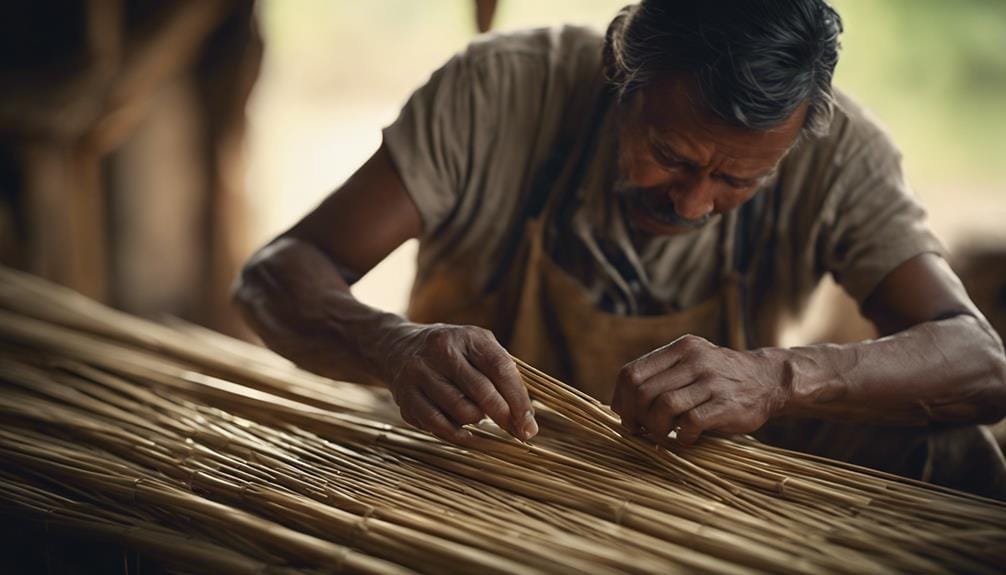
Exploring advanced weaving patterns with rush reeds introduces intricate designs and textures into traditional basket weaving practices. By experimenting with twills, twining, waling, and randing techniques, we can achieve complexity that elevates the aesthetic appeal of rush reed baskets. Incorporating checkerboard, arrowhead, and herringbone patterns using rush reeds adds visual interest and texture to the weaves, creating stunning visual effects.
For those seeking geometric patterns, delving into hexagonal, diamond, and zigzag weaving techniques with rush reeds offers a chance to craft dynamic and visually engaging basket-making designs. By combining multiple weaving styles, like checkerboard, with weaving, we can enhance the intricacy and allure of rush reed baskets, showcasing the versatility of this traditional craft.
To further enhance these intricate designs, consider utilizing color variations in rush reeds or incorporating dyed rushes to add depth and contrast, bringing a unique and vibrant element to your advanced weaving patterns. Experimenting with these techniques opens up a world of creative possibilities in traditional basketry, allowing for exploring new artistic horizons.
Finishing and Maintaining Rush Reed Baskets
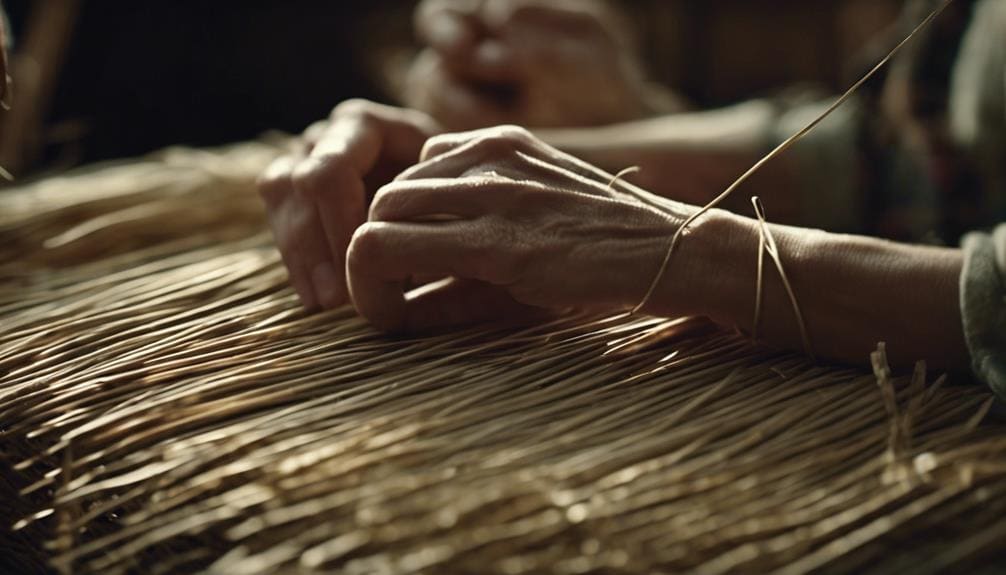
To finish and maintain rush reed baskets effectively, one must carefully trim excess material and secure the ends for a tidy appearance. Dusting regularly to prevent buildup and preserving the natural luster of the rushes are essential steps in maintaining these baskets. Additionally, a protective finish like varnish or wax can enhance their durability and longevity. Storing rush reed baskets in a cool, dry place away from direct sunlight is crucial to prevent fading and damage over time.
- Color Options: Experimenting with different dyeing techniques can offer various vibrant color options to customize rush reed baskets.
- Repair Techniques: Learning how to replace damaged rushes, reweave sections, and reinforce weak spots is vital in extending the lifespan of rush reed baskets.
- Cleaning Methods: Utilizing gentle cleaning methods, such as a soft brush or damp cloth, can help maintain the cleanliness of rush reed baskets.
Frequently Asked Questions
What Can You Make With Rushes?
I can create beautiful, functional rush placemats, coasters, wall hangings, and sculptures. Rushes offer versatility for crafting stunning pieces that combine tradition with modern aesthetics, enriching spaces with their natural charm and durability.
How Do You Prepare Rushes for Weaving?
Preparing rushes for weaving involves soaking them to soften, cutting lengths for weaving, twisting fibers for strength, dyeing rushes for color, and shaping baskets with care. It’s a meticulous process that ensures the beauty and durability of the final product.
What Are the Three Techniques Used in Native American Basket Weaving?
I incorporate coiling, plaiting, and twining techniques in my Native American basket weaving. Color variations and intricate weaving patterns reflect cultural significance and storytelling. These methods have evolved with modern adaptations while preserving traditional craftsmanship.
What Reeds Are Used for Basket Weaving?
Reeds like sweetgrass, black rush, and bulrush are used in traditional basket weaving. These rushes offer durability and unique qualities. What types of rushes are best for your weaving projects, and what traditional techniques can enhance your craft?
Conclusion
In conclusion, utilizing rush reeds in traditional basketry not only enhances the sustainability and connection to nature in weaving but also showcases this craft’s intricate and enduring artistry. Artisans can create sturdy and functional baskets with intricate patterns by carefully harvesting, sorting, and weaving rush reeds. The historical significance and cultural importance of rushes in basket making highlight their enduring popularity and environmental impact, promoting sustainable practices in craftwork.

